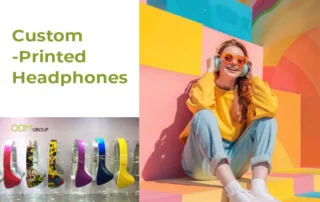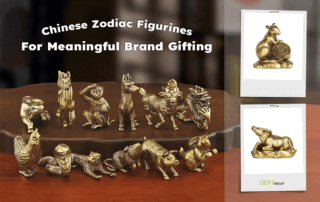Today’s marketing landscape is noisier, faster, and more distracting than ever. With that said, how can you ensure your brand feels consistent and connected, regardless of where your audience encounters it?
This is where omnichannel advertising comes in — a strategy built to connect every touchpoint across your customer’s journey. But how can you apply it to your business, and is it really worth the effort? Let’s explore how this approach works and why it’s reshaping modern marketing.
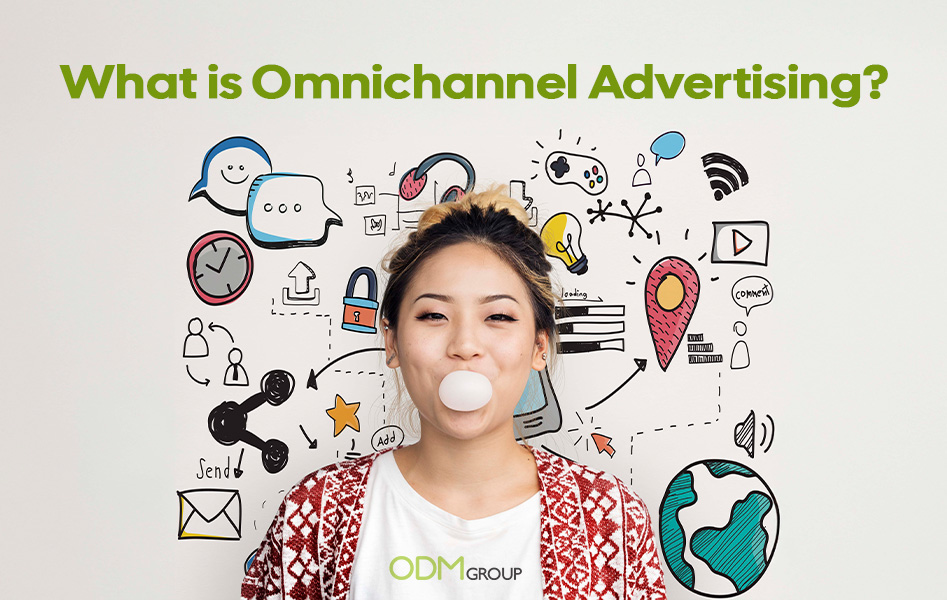
What Exactly Is Omnichannel Advertising?
Omnichannel advertising is a strategy that connects all your marketing channels — both online and offline — to create a unified experience for your audience.
Think of it as conducting an orchestra. Each instrument (social media, email, website, in-store display, and even packaging) plays its part, but together they form one powerful brand message.
Here’s the key difference:
-
Multichannel: You appear on multiple platforms, but each one operates independently.
-
Omnichannel: Every platform is linked. Data, design, and messaging all talk to each other.
Why You Need Omnichannel Advertising
Modern consumers expect brands to truly understand them. They don’t think in terms of channels. They think in terms of experiences. Here’s why that matters for you as a marketer:
1. Customers Expect Consistency
Your audience wants the same quality, tone, and message at every touchpoint. If your ad promises one thing but your email or social post says another, trust erodes instantly. Consistency builds credibility, and credibility drives conversions.
2. Data Becomes Your Competitive Edge
An omnichannel strategy allows you to collect and unify insights from every platform into a single, powerful customer profile. You’ll see what captures attention, what gets ignored, and when your audience is most likely to take action. This clarity helps you make smarter, data-driven marketing decisions.
3. It Strengthens Brand Loyalty
When customers feel recognised and valued across all channels, they naturally engage more and stick around longer. Consistent experiences create emotional connections, and that’s what turns one-time buyers into lifelong advocates.
Core Elements of Omnichannel Advertising
Successful omnichannel advertising isn’t about juggling every platform—it’s about making them work together. To build truly connected campaigns, you need to focus on four essential elements that keep your message consistent, your data meaningful, and your audience engaged.
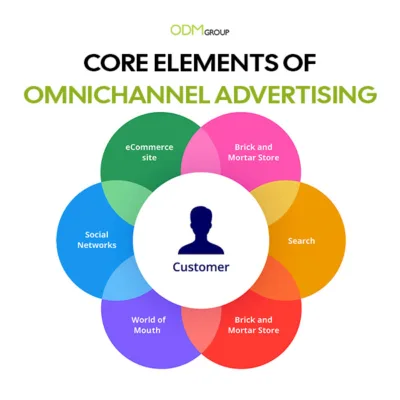
1. Consistent Brand Messaging
Your audience should recognize your brand instantly, no matter where they encounter it. From your Facebook carousel ads to your packaging inserts, the look, tone, and message should all tell the same story.
Consistency is what turns multiple impressions into one unified brand experience. It builds trust and keeps your marketing from feeling disjointed.
2. Connected Channels That Work Together
Omnichannel advertising means more than running parallel campaigns. It’s about designing every touchpoint to flow naturally into the next.
For example, a potential customer might see a TikTok video ad, click through to your website, and then receive a personalized email reminder about the same product they viewed. Each channel should guide the customer forward, not feel like a new beginning.
3. Data-Driven Personalization
Personalization is the heart of omnichannel advertising. Every click, view, and purchase gives you data that can help refine your next message. When you use that insight wisely, you make your customers feel seen and valued.
Instead of showing everyone the same generic ad, tailor your offers based on behavior—send product recommendations to repeat buyers or reminders to those who left items in their cart.
4. Real-Time Optimization
Consumer behavior changes fast. That’s why real-time adjustments are critical in omnichannel advertising.
With the help of automation and AI, marketers can tweak campaigns instantly—adjusting ad placements, updating offers, or retargeting users based on live engagement data.
This flexibility ensures your campaigns stay relevant and cost-efficient across every channel.
How Omnichannel Advertising Works?
At its best, omnichannel advertising is seamless and feels invisible. Your customer moves smoothly from one channel to another without ever noticing the handoff. Behind the scenes, though, there’s a carefully designed sequence guiding them through the journey.
Here’s how the flow typically works — from awareness to loyalty — and what you, as a marketer, can do at each step.
1. Awareness
This is where you first meet your audience. Your goal isn’t just to be seen; it’s to connect.
Utilize social media ads, influencer collaborations, and search engine campaigns to introduce your product or brand story effectively. Ensure your visuals, tone, and message remain consistent across all channels — that’s what makes omnichannel advertising stand out from traditional, disconnected campaigns.
2. Engagement
Once you’ve caught their attention, it’s time to deepen the relationship. Don’t just sell — educate and engage.
Utilize retargeting ads, email sequences, or chatbots to provide a valuable offer: a guide, a quiz, or a product comparison. The goal is to keep your audience interacting with you across various touchpoints while consistently recognizing your brand voice.
3. Conversion
When customers are ready to purchase, your job is to make that process effortless. Remove friction at every stage.
With omnichannel advertising, this might mean synchronizing your online and offline experiences: a customer can browse online, receive an abandoned-cart email, and then complete the purchase in-store — all with the same promotional offer applied automatically.
4. Retention
Omnichannel success doesn’t stop at conversion. True growth happens when you turn customers into repeat buyers and brand advocates.
After a purchase, follow up with personalized emails, exclusive offers, or loyalty programs. Even packaging can be part of the strategy — add QR codes that link to care tips, bonus rewards, or referral programs.
5. Feedback Loop
Omnichannel advertising isn’t a “set it and forget it” approach. The best campaigns evolve as you collect more data.
Monitor how customers move between channels, track drop-off points, and fine-tune your messaging accordingly. With tools like Google Analytics 4, Meta
How Omnichannel Advertising Fits the Digital Age
Today’s consumers switch between platforms faster than ever — one moment they’re watching a TikTok review, the next they’re checking your website or reading product feedback on Reddit.
Here’s how you can make omnichannel work in today’s digital-first landscape:
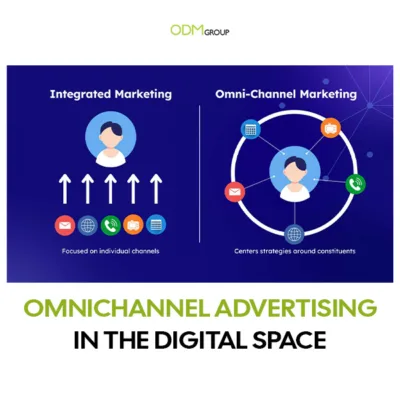
1. Social Media: Your Frontline for Discovery
Social media remains the top entry point for most customer journeys. Platforms like Instagram, TikTok, LinkedIn, and X (Twitter) shape how audiences discover new brands and trends.
For omnichannel advertising, your goal on social isn’t just engagement — it’s consistency. Your tone, visuals, and offers should align perfectly with your website, email campaigns, and even your physical marketing materials.
Tip for marketers: Use social data to retarget visitors across platforms. For instance, if someone engages with your Instagram post, follow up with a personalized offer on Facebook or via email within 24 hours.
2. Email and CRM
Email may not be flashy, but it’s one of the strongest tools in an omnichannel strategy. Combined with a sound CRM system, it enables you to create precise, data-driven campaigns that address customer needs directly.
If someone browses your products without making a purchase, your CRM can automatically trigger an email showcasing the same item or complementary products. When done right, this feels helpful, not pushy.
Pro tip: Use dynamic content in your emails (like personalized recommendations or countdown timers) to match the customer’s stage in their journey.
3. Programmatic Advertising
Programmatic technology takes omnichannel advertising to another level by automating ad buying based on real-time user data. This means your brand message can follow a user across devices and platforms, but in a relevant, non-intrusive way.
For example, a customer who watches your product video on YouTube might later see a Google Display ad reminding them of that same product. It’s personalized without feeling repetitive.
Marketer insight: Set frequency caps and rotate creatives often. This keeps your omnichannel ads fresh and prevents audience fatigue.
4. Analytics and AI
Omnichannel advertising thrives on data. With AI-powered tools, marketers can now unify insights across platforms, tracking not just clicks but also intent and sentiment.
AI can predict what customers are likely to do next and recommend the best timing, channel, or message for re-engagement. This gives your campaigns precision that manual targeting can’t match.
Tip: Integrate analytics dashboards that pull data from all major channels (Google, Meta, CRM, email, etc.) so you can see the full customer journey in one place.
5. Paid + Organic
In the digital era, successful omnichannel strategies don’t rely solely on paid ads. They blend paid and organic efforts to create a more authentic presence.
Organic content builds trust and storytelling, while paid campaigns amplify reach and visibility. When both are aligned — visually and strategically — your brand feels cohesive and credible.
Example: A brand’s influencer collaboration on TikTok can be boosted through a paid ad, linking back to an email signup page and a website landing page. Each touchpoint supports the next.
Omnichannel Advertising Beyond the Screen
No matter how advanced your digital campaigns get, the physical world remains a critical part of omnichannel advertising — because that’s where customers feel your brand. Here’s how to make your offline marketing work seamlessly with your digital ecosystem:
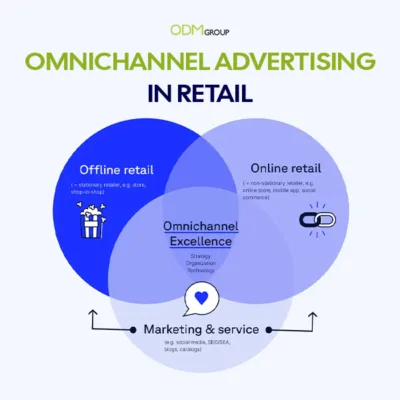
1. In-Store Experiences That Extend Online
Your store is more than a sales space. It’s a storytelling platform. Every visit should strengthen your customer’s digital relationship with your brand.
Use tools like QR codes, NFC tags, or interactive screens to connect physical engagement with digital follow-ups. A shopper scanning a product tag could instantly access tutorials, reviews, or loyalty rewards on your website.
Example: A beauty brand might feature in-store QR codes that link customers to influencer tutorials or limited-edition drops online. The experience feels fluid, not fragmented.
2. Packaging That Connects
Your product packaging is often the first physical contact customers have with your brand, and it’s a valuable space for storytelling. In omnichannel advertising, it can do more than protect a product. It can drive engagement.
Include printed QR codes, AR triggers, or social hashtags to bring customers back to your digital platforms. You can even use smart packaging that tracks engagement or activates post-purchase offers.
Pro marketer insight: Use packaging inserts with campaign-specific CTAs — like “Share your unboxing and tag us for a reward” — to drive organic reach and connect offline buyers to your online community.
3. Promotional Merchandise That Bridges Channels
Promotional products are often undervalued in omnichannel campaigns — but they’re powerful connectors. A well-designed branded item can move seamlessly between physical and digital spaces.
Think of event giveaways, retail gifts, or loyalty rewards. Add a scannable code that leads to your campaign microsite, AR experience, or exclusive digital offer. Suddenly, that physical gift becomes a marketing trigger that tracks engagement and extends your brand story.
Example from The ODM Group: We help brands create promotional items — from 3D holographic displays to collectible merchandise — that not only catch attention in stores but also drive online actions through integrated digital touchpoints.
4. Events and Experiential Marketing
Trade shows, pop-ups, and live events are perfect opportunities for omnichannel advertising to shine. They give customers tangible experiences that digital ads can’t replicate — while still feeding data back into your ecosystem.
Use digital check-ins, social media hashtags, or gamified displays to connect attendees’ offline interactions with online engagement. Every scan, sign-up, or share becomes a measurable part of your campaign.
Tip: Track event interactions through digital dashboards to follow up with personalized offers or post-event content — keeping the conversation alive after the event ends.
Mapping Omnichannel Principles to Promotional Products
If you’re in retail and planning to use promotional products to support your omnichannel advertising launch, this guide will help you do it right.
| Omnichannel Principle | How It Applies to Merchandise | Marketing Advantage |
|---|---|---|
| Consistent Messaging | Match product design, packaging, and messaging to your campaign visuals. | Creates cohesive brand storytelling across all touchpoints. |
| Connected Channels | Use QR/NFC links on gifts to guide customers to online experiences. | Strengthens offline-to-online engagement loops. |
| Data-Driven Personalization | Offer gift tiers based on a customer’s purchase history or segmentation. | Builds stronger emotional connection and loyalty. |
| Real-Time Optimization | Track which gift items generate the most scans, posts, or redemptions. | Allows agile campaign adjustments for higher ROI. |
Integrating merchandise into omnichannel marketing ensures that your physical and digital efforts support one another — a small detail that drives measurable impact.
Building an Omnichannel Strategy That Works
Now that you know what omnichannel advertising is and why it matters, the next question is… how do you actually make it work for your brand? Here’s how to build it step by step.
1. Map the Customer Journey
Start by identifying every place your audience interacts with your brand, both online and offline. From social ads and emails to in-store visits and packaging, list every touchpoint that shapes their experience.
Then, trace how customers move between these points. Where do they discover you? Where do they drop off? What triggers them to convert?
2. Unify Your Data Systems
Data is the backbone of omnichannel advertising. If your social, website, and CRM data all live in silos, you can’t build a complete picture of your customer.
Integrate your systems so that every department can access the same information. This alignment enables you to deliver consistent, personalized messages based on actual behavior.
3. Create Consistent Content and Visuals
Your campaigns should have a consistent look and feel across every channel. That doesn’t mean copying and pasting. It means adapting your message while keeping the tone and design consistent.
For example, a “new launch” ad on Instagram might show lifestyle visuals, while your website banner highlights product specs. Different execution, same story.
4. Personalize Every Interaction
Omnichannel advertising thrives on personalization. Use your unified data to deliver the right message at the right moment.
Send a tailored email when someone leaves a product in their cart. Recommend complementary products after a purchase. Or adjust your social ads based on browsing history.
5. Bridge Online and Offline Channels
Don’t let your physical and digital marketing exist in isolation. Connect them.
Encourage in-store visitors to sign up for email updates, include QR codes on packaging that link to your website, or offer online discounts redeemable in person. Every physical moment can be a digital opportunity and vice versa.
6. Automate, Monitor, and Optimize
Once your campaigns are live, automation helps keep them consistent without constant manual effort. Schedule follow-ups, retarget audiences, and trigger personalized messages automatically based on customer behavior.
But automation isn’t set-and-forget. Monitor your data continuously. Look at metrics like engagement rate, customer lifetime value (CLV), and conversion paths to see what’s working and where customers drop off.
7. Align Teams and Goals
Omnichannel success depends on internal collaboration. Marketing, sales, customer service, and logistics should all share the same objectives and customer insights. When teams operate in sync, your audience experiences a unified brand from every angle.
Discover other marketing and advertising campaigns to implement in your business…
Seeding marketing is a strategy where brands distribute their products to carefully chosen individuals or groups to spark organic conversation, reviews, and content.
Retailtainment is the practice of blending retail and entertainment to make shopping more engaging, memorable, and enjoyable.
Traditional marketing refers to any form of promotion that doesn’t rely on the internet. It’s the offline communication that dominated the pre-digital era.
ESG marketing refers to how companies communicate their environmental, social, and governance initiatives in a way that fosters trust and connection with their audiences.
Direct mail advertising is a form of direct marketing that delivers physical promotional materials, such as flyers, catalogs, or letters, straight to a prospect’s mailbox via postal or courier services.
Bringing It All Together
A strong omnichannel advertising strategy connects every part of your marketing, including people, platforms, and data, into one cohesive system.
It’s not about doing more. It’s about doing it smarter — understanding your customers deeply, delivering consistent experiences, and creating value across every touchpoint.
At The ODM Group, we help brands bring their omnichannel strategies to life. From custom packaging and POS displays to promotional merchandise that bridges digital and physical engagement, we make sure your brand experience stays unified across every channel.
If you’re ready to strengthen your omnichannel presence with tangible, well-designed marketing solutions, ODM can help bring your vision to life.
Explore our wide range of promotional products…
FAQs About Omnichannel Advertising
Here are some of the most common questions marketers ask about omnichannel advertising, and clear answers to help you get started.
What’s the difference between omnichannel and multichannel advertising?
Multichannel marketing uses several platforms to reach customers — but each operates independently. Omnichannel advertising, on the other hand, connects all those platforms into one seamless experience. Your social ads, website, emails, and even in-store promotions work together to guide the customer through a consistent brand journey.
How does omnichannel advertising improve ROI?
Because it unifies your data and messaging, omnichannel advertising reduces wasted ad spend and increases conversion rates. When every touchpoint reinforces the same message, customers are more likely to remember, trust, and act on it. Over time, this consistency leads to higher engagement and customer lifetime value.
Which tools can help manage omnichannel campaigns?
Several marketing tools make integration easier. HubSpot, Salesforce Marketing Cloud, and Google Marketing Platform are popular for unifying analytics, automation, and customer data. For smaller teams, tools like Klaviyo, Mailchimp, or Zoho CRM are great entry points.
How does physical marketing fit into omnichannel advertising?
Physical marketing — like packaging, store displays, or branded merchandise — plays a vital role in connecting offline experiences with digital ones. Adding QR codes, NFC tags, or digital CTAs to your physical materials can drive online engagement and track campaign performance.






